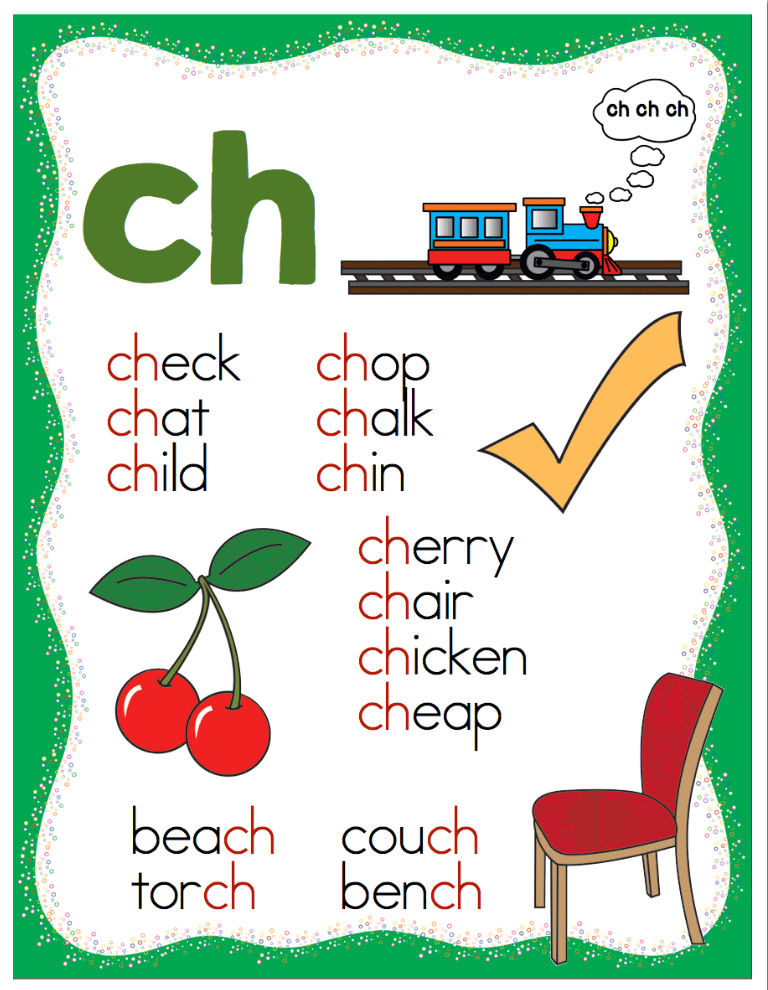RF.1.3.B.vii: Decode Regularly Spelled One-Syllable Words with Common Consonant Digraphs (sh, ch, tch, th, ph, gh, ng)
Skill
RF.1.3.B.vii: Decode Regularly Spelled One-Syllable Words with Common Consonant Digraphs (sh, ch, tch, th, ph, gh, ng)
Standard
CCSS.ELA-LITERACY.RF.1.3.B: Decode regularly spelled one-syllable words.
Description
Mastery: Student silently recognizes digraphs (sh, ch, tch, th, ph, gh, ng) as a single sound and decodes regularly spelled one-syllable words containing consonant digraphs with automaticity.
Acquiring: Student is able to identify letter-sound correspondence of consonant digraphs in isolation, but may decode the sounds separately when reading words (e.g. /m/ /e/ /s/ /h/ instead of /m/ /e/ /sh/). Student is better able to decode consonant digraphs at the beginning of the word and has more difficulty when it comes at the end of the word.
Probes
T: Read the following words: ship, chat, patch, thin, thus, them, graph, cough, rung, phone (only count errors on digraphs – ignore variant or long vowel pattern errors, e.g. cough & phone).
Activities and Resources
Small Group Instruction – Direct Instruction
- P.038 Encoding and Decoding Digraph Delight
- P.040 Encoding and Decoding A Digraph a Word
- P.032 Onset and Rime Word Roll-A-Rama (do not use blends and digraphs – change letters on the cubes)
- P.026 Onset and Rime Onset and Rime Slide
- P.033 Onset and Rime Word Maker Game (remove digraphs and variant vowels)
- P.001 Letter-Sound Correspondence: Letter Sound Match
- Consonant Digraph Flashcards/ Memory Game (Small Group, w/ Partners)
- Consonant Digraph BINGO
- First Words with Consonant Digraphs:
During Transitions
- Dragon Word Lists (Easy Consonant Digraphs)
- Digraph Word Hunt
- Alphablocks Series 4 – Alphabet
Reinforce Skills/Independent Work Time – Independent/Small Group Center Activity
- P.019 Letter Sound Correspondence Letter-Sound Folder Sort
- First Words with Consonant Digraphs (Worksheet)
- Roll, Read, Color
- Digraph Boggle
- Digraph Word Hunt
- Consonant Digraph Word Searches
- Dragon Words: CHSHTHinTHisNG
Display (e.g. Anchor Chart):
Considerations & Reminders
- Teachers need to remind students that consonant digraphs are two letters that make one sound. When pointing out that the two letters make the one sound, the teacher might use two fingers to point at each letter, but tap/touch the word and the sound as one (i.e. both fingers tap at the same time). This tap/connecting of the two letters, shows students that the two letters make one sound.
- Be careful to differentiate between consonant blends (two letters that keep both of their individual sounds even when combined) and digraphs (two letters that make one new sound).
 Source: Make, Take & Teach
Source: Make, Take & Teach



